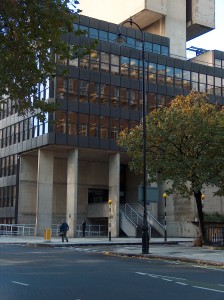This is the first in a series of short blogs about important dates in the legal calendar. We launch the series with a post in memory of Dr Ivy Williams who was the first woman to be called to the English Bar on 10 May 1922.
Dr Williams scored 475 in her bar finals, a first class pass, which placed her second of 123 candidates. She never actually practised as a barrister but she was the first woman to teach law at a British University. As she was called to the Bar she spoke ‘of the women who would follow and practise at the Bar’, and she asked that ‘every help and encouragement should be given to them in the difficulties they would face.’
It is almost 100 years since Dr Ivy Williams became the first female barrister and although it is easier for women to qualify as lawyers now there is still a long way to go in order to redress the gender imbalance that exists in the legal profession.
For more information about Dr Ivy Williams see the Women in Law section of the Inner Temple website.
To celebrate Women’s history month the UK Courts and Tribunals Judiciary website published interviews with two international female judges and we have reproduced short extracts of these interviews below.
Justice Zainab Jawara Alami of the High Court, Based in Banjul, The Gambia
How do you think things have progressed for women in the judiciary since you became a judge?
Currently women make up 80% of the Bench in the High Court and the Court of Appeal. I would say that my judiciary is a very progressive one when it comes to women on the Bench
It has been a long and hard road for women all over the world in terms of having equal status to men in society and in the work place. Women’s day celebrates the achievements of women and it recognises how far we have come, the struggle continues as women still face discrimination and gender based violence but it is wonderful to celebrate women for a whole month in every year, and it is a month to raise awareness in terms of gender parity.
What does being a woman in the judiciary mean to you?
Being a female judge allows me to pursue a career on the bench and raise a family. The courts vacation allow us to spend time with our families and recharge for the hard work ahead. It is a big responsibility that I do not take for granted. It is challenging but it is quite rewarding when young female lawyers can look up to me and know that they can also join the bench and raise families.
The full interview can be found on the Courts and Tribunals Judiciary website here.
Judge Nallini Pathmanathan of the Federal Court of Malaysia
How do you think things have progressed for women in the judiciary since you became a judge?
Malaysia has always been unique in that women have for some considerable time since the 1960s been appointed to the superior Bench. In the subordinate courts, women have also always featured. Since the early 2000’s however, the number of women on the Bench has increased tremendously. At present there are 14 judges sitting in the Federal Court, which is the apex Court. Of the 14, 8 are females. Our Chief Justice, The Right Honourable Tengku Maimun binti Tun Mat, is female, as is the President of the Court of Appeal (the equivalent in the United Kingdom would be the Master of the Rolls).
The numbers are equally high in the Court of Appeal and the High Court. We do not have a problem with gender diversity as the number of women in the Malaysian judiciary comprise almost up to half of the judges in the country. The moot question would be – who is the endangered species – men or women?
What does being a woman in the Judiciary mean to you?
That is a difficult question to answer, because gender has not posed an obstacle in the course of my judicial career, thus far. Nor does gender define me as a judge. Interestingly enough, gender posed more of an obstacle at the Bar, in my time, than it does in the Judiciary.
However, I believe that as a woman in the Judiciary I provide a degree of diversity of thought, approach and mindset that contributes towards more expansive and hopefully, more progressive judgements.
In summary things have progressed very well for women in the judiciary given the fact of our Chief Justice and the President of the Court of Appeal being female. They were appointed to these positions in 2019 and 2020 respectively.
The full interview can be found here.
See also previous posts on the IALS Blog
An empirical study of the gender of counsel before the UK’s highest court

